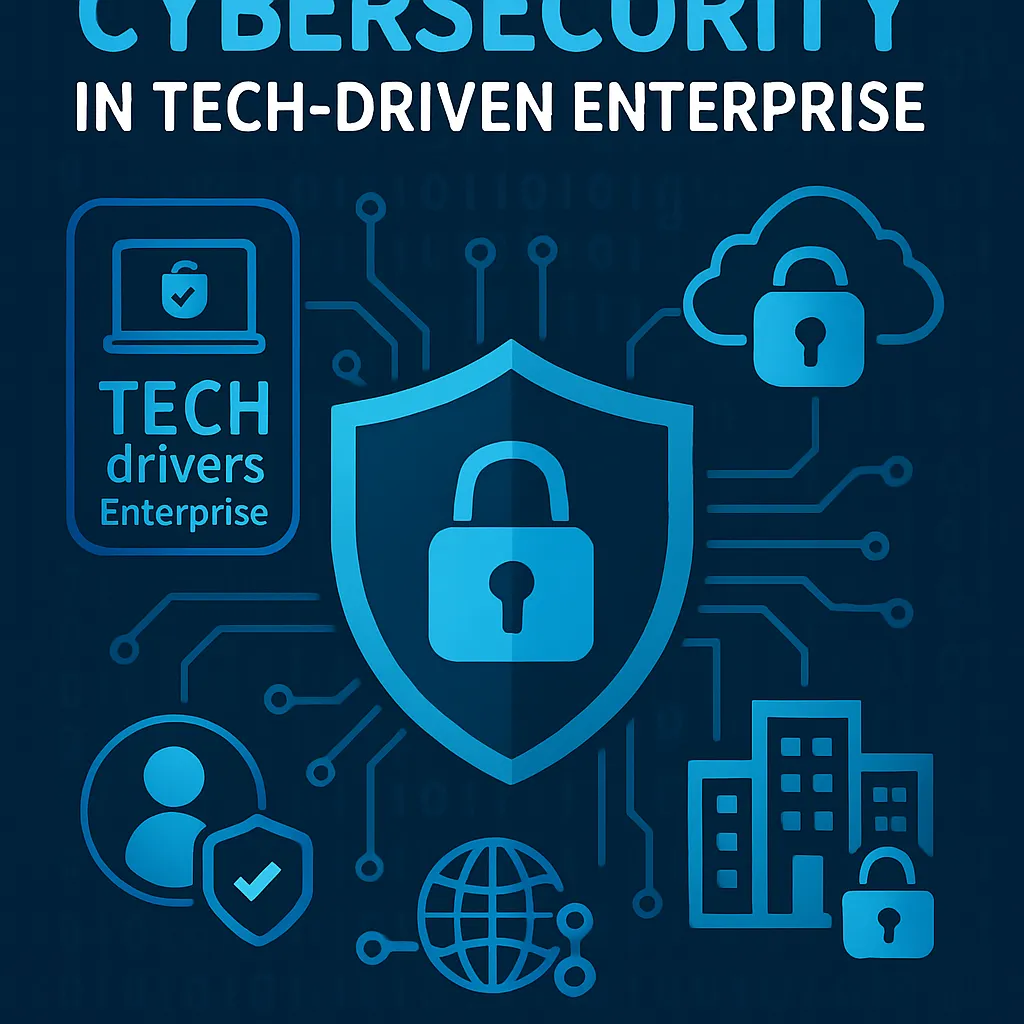Introduction
The increasing reliance on digital technologies has made cybersecurity a top priority for modern enterprises. Tech-driven organizations handle vast amounts of data, rely on cloud infrastructure, and interact with customers and partners across digital platforms. This exposure makes them prime targets for cyber threats.A robust cybersecurity strategy is not just an IT requirement—it’s a core component of strategic management. Let’s explore the best cybersecurity practices that tech-savvy enterprises should adopt to protect their assets and reputation.
Understanding Cybersecurity in a Tech-Driven Business
- Cybersecurity involves protecting systems, networks, and data from unauthorized access or attacks.
- It encompasses both technical solutions and organizational practices.
- Tech-driven enterprises face increased risks due to their high digital dependency.
Top Cybersecurity Threats Facing Modern Enterprises
- Phishing Attacks: Fake emails trick employees into revealing sensitive information.
- Ransomware: Malicious software encrypts company data and demands payment for release.
- Data Breaches: Unauthorized access to customer or business data can lead to major legal and financial consequences.
- Insider Threats: Disgruntled or careless employees can leak or compromise data.
- Zero-Day Exploits: Attacks that exploit unknown vulnerabilities before patches are available.
Core Cybersecurity Strategies for Enterprises
1. Implement a Zero-Trust Security Model
- Zero trust assumes no user or device is trustworthy by default—even inside the network.
- Strict verification and access control policies should be enforced for all activities.
2. Regular Risk Assessment and Audits
- Conduct cybersecurity audits to identify vulnerabilities in systems and software.
- Review access logs, configurations, and user permissions regularly.
3. Multi-Factor Authentication (MFA)
- Implement MFA for all systems—especially for remote access, admin accounts, and cloud platforms.
- MFA significantly reduces the chances of unauthorized access due to stolen credentials.
4. Endpoint Security Management
- Secure laptops, mobile devices, and desktops with antivirus software, encryption, and remote-wipe features.
- Use Mobile Device Management (MDM) tools for added control over company-issued devices.
5. Employee Training and Cyber Hygiene
- Train employees to recognize phishing scams, social engineering attempts, and risky online behavior.
- Establish and enforce strong password policies and regular password changes.
6. Data Encryption and Backup
- Encrypt sensitive data in storage and during transmission.
- Implement regular, automated backups and test recovery protocols.
7. Secure Cloud Infrastructure
- Use secure cloud service providers that comply with industry standards like ISO 27001, SOC 2, or HIPAA.
- Monitor and log cloud activity to detect unusual patterns or unauthorized access.
8. Develop an Incident Response Plan
- Have a documented plan for responding to breaches, attacks, or data loss events.
- Include roles, communication procedures, and steps for containment and recovery.
Advanced Cybersecurity Tactics
- Behavioral Analytics: Use AI and ML to detect anomalies in user or system behavior.
- Security Information and Event Management (SIEM): Aggregate logs and events to detect and respond to threats in real time.
- Penetration Testing: Regularly test systems for vulnerabilities through ethical hacking simulations.
Cybersecurity Compliance and Governance
- GDPR, HIPAA, PCI-DSS: Ensure compliance with applicable data protection regulations based on your industry and customer location.
- Cybersecurity Policies: Maintain updated policies that guide user behavior, access, and IT usage.
- Vendor Risk Management: Evaluate third-party vendors for their security posture before granting access to your systems or data.
Benefits of a Strong Cybersecurity Framework
- Business Continuity: Minimize downtime caused by attacks or data loss.
- Customer Trust: Secure systems reassure customers and partners.
- Competitive Advantage: Cyber-resilient companies attract more clients and avoid costly breaches.
